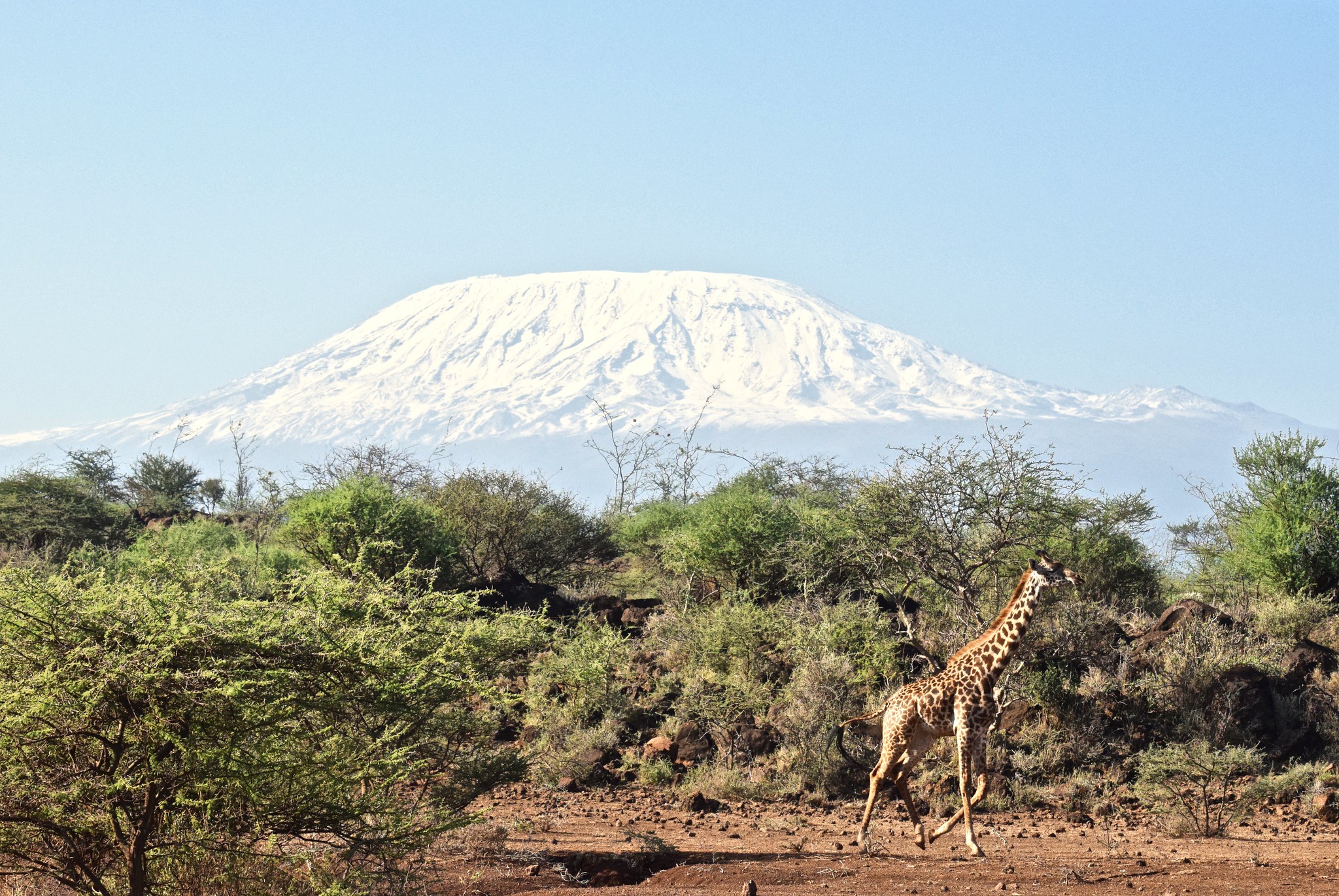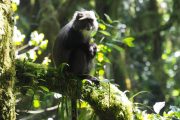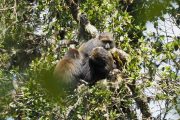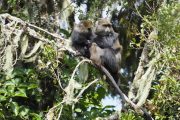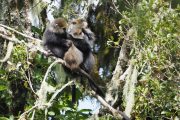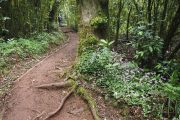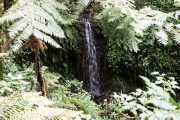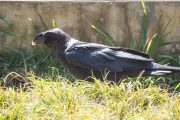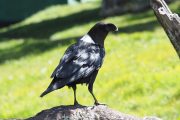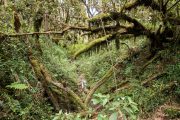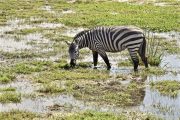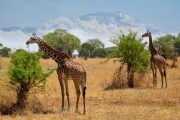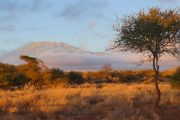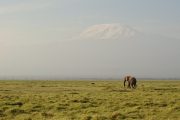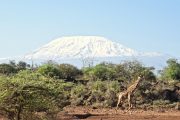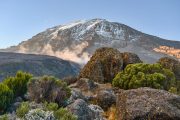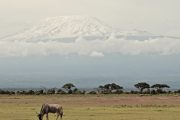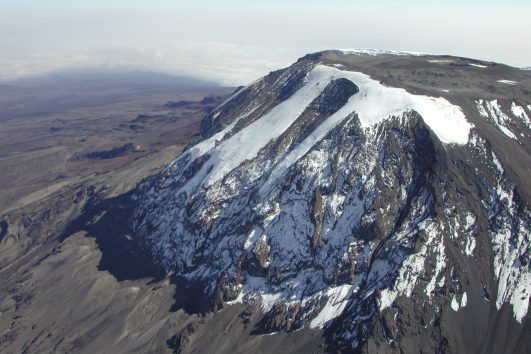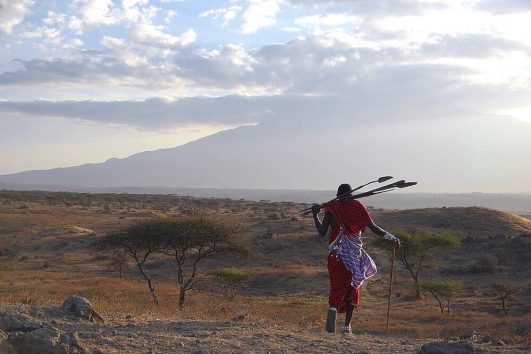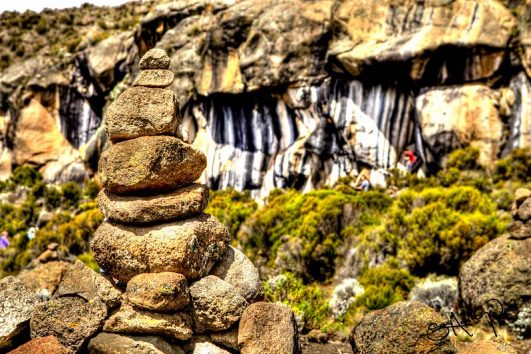Kilimanjaro National Park is a national park in Tanzania that plays host to many species of wildlife as well as home to the more popular Mount Kilimanjaro. Unlike other national parks located to the north of Tanzania, where tourists come to see wildlife, this one is a different case scenario as tourists flock in their thousands to climb the mountain more than do safari game drives. Even though wildlife is there, many people pay more interest to the mountain that is located inside Kilimanjaro National park.
The Kilimanjaro National Park in Tanzania is close to the town of Moshi, and it is readily reachable by air or by road via Arusha. 650 square kilometers are its maximum size, and Tanzania National Parks Authority now oversees its management (TANAPA). Along with the annual adventurous climbing expeditions, Mount Kilimanjaro National Park also makes for a fantastic area to see wildlife and is home to a variety of creatures. The Cape Buffalo is one of several animal species that may be found in the Kilimanjaro National Park, which is home to a variety of habitats including grasslands, moorland, and montane forests.
Read about the Kilimanjaro National Park fees and regulations
Usually seen between the Tarakia and Namwai Rivers, African bush elephants can also be seen on occasion in higher altitudes. Above the timberline, grey duikers, tree hyrax, and numerous rodents are quite common, whilst leopards, blue monkeys, and other creatures live in montane forests. You can easily notice that this safari park is among the top safari locations in Africa when you go there.
Why is Kilimanjaro National Park so popular?
Its popularity is brought about by the majestic, snow-capped mountain that is located at the heart of the park because rather than exploring the wildlife in the park, tourists come here mainly to marvel at this beautiful mountain, Mount Kilimanjaro.
Mount Kilimanjaro is the highest mountain in Africa as well as the highest freestanding mountain in the world. If that is not reason enough for tourists to sideline Entire Park’s interest just for this African giant nicknamed Africa’s rooftop then what else?
Read our great article on why Kilimanjaro National Park is so popular.
Kilimanjaro National Park map
The distance from Arusha Town to Kilimanjaro national park is 128 km (80 miles) and approximately one hour’s drive from Kilimanjaro International Airport.
There are entry gates to Kilimanjaro National Park among other entry points are Machame Gate, Londorosi Gate, Lemosho Gate, Umbwe gate, and Marangu Gate, which also act as the park’s headquarters. Below is the map showing the location of Kilimanjaro National Park in Northern Tanzania.
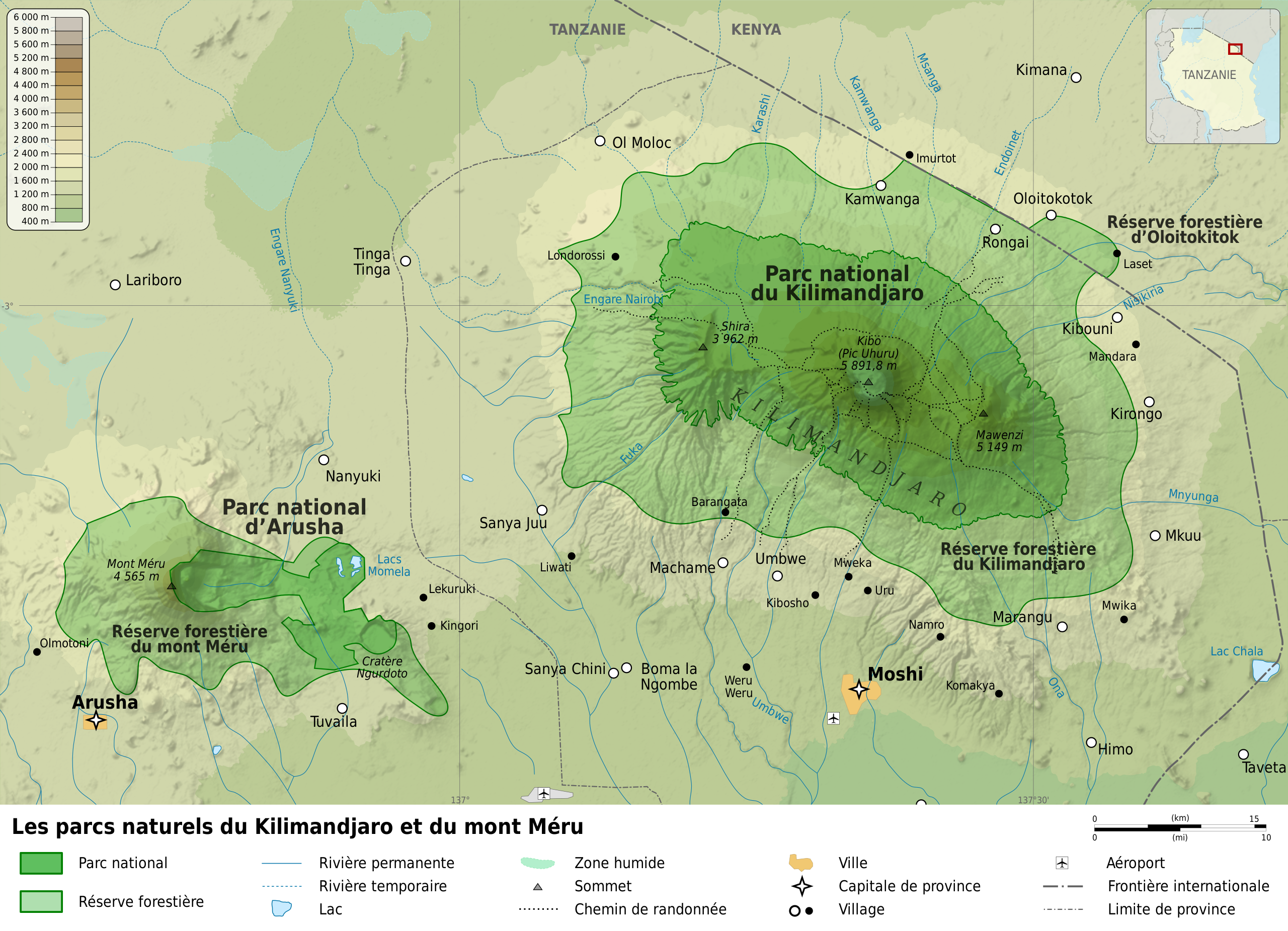
Kilimanjaro National Park Animals
The lower rainforest where the main Kilimanjaro national park resides is home to plenty of wildlife, including big game wildlife and big five animals like buffaloes, elephants, leopards, elands, giraffes, and monkeys.
On the mountain, a variety of animals can be found in the park. Above the tree line area, the Kilimanjaro tree hyrax, the grey duiker, and rodents can be spotted from time to time
The People of Kilimanjaro National Park
At the base of Mount Kilimanjaro, you get the chance to interact with and learn about the main tribes that call the Kilimanjaro National Park and Mount Kilimanjaro home, the Maasai tribe, and the Chagga tribe.
Kilimanjaro National park location
Kilimanjaro National Park is located in the Kilimanjaro region, near Moshi Town, and lies approximately 300 kilometers (190 mi) south of the equator.
It covers an area of 1,688 square kilometers (652 sq mi) and is under the administrative care of the Tanzania National Parks Authority (TANAPA).
KINAPA is the board that regulates the Kilimanjaro National Park and fee, it is the abbreviation of Kilimanjaro National Park Authority.
The park includes the whole of Mount Kilimanjaro above the tree line and the surrounding montane forest belt above 1,820 meters (5,970 ft).
The 1688 square kilometer Kilimanjaro National Park is situated at coordinates 2°50′-3°10’S latitude and 37°10′-37°40’E longitude.
Tour Activities to do at Kilimanjaro National Park
The park offers views of Mount Kilimanjaro, Chala Crater Lake, Kibo Peaks, Shira Plateau, Olpopongi, and other stunning natural features. The most common tourist activity in the park is mountain climbing and this is our forte as Tranquil Kilimanjaro, a tour operator guiding tourists to the summit of this gigantic mountain. Visitors may go on nature treks, view mammals and birds, go hiking or camping, or meet the Maasai tribe. Here are a few safari activities you may enjoy in Tanzania, particularly in Kilimanjaro National Park.
We have some great tips to help you climb Mount Kilimanjaro.
Bird spotting activities
It’s good news for bird enthusiasts since Kilimanjaro National Park is home to over 150 different kinds of birds, with forest birds topping the list. The park is home to both permanent residents and migratory birds from all over the world, including Asia. A few of the birds that may be observed at Kilimanjaro national park are the indigenous black-shouldered kite, long-tailed trogon, Gabar goshawk, blue-naped mouse birds, grey hornbill, African fish eagles, white-cheeked barbet, African pygmy kingfisher, red-capped robin chat, and white-necked raven.
Read about the bird species found on Mount Kilimanjaro
Mountain Trekking
Hiking up Africa’s tallest freestanding mountain is the most popular activity in Kilimanjaro National Park. Numerous travelers come to the nation specifically for this purpose.
The top of Kibo peak, Kilimanjaro’s highest point at 5,895 meters, offers spectacular views of the nearby town, other summits of the mountain, including Shira peak, and the surrounding lush vegetation. Kibo peak is always covered with snow throughout the year. Most of the days spent ascending Kilimanjaro are not challenging since the trails are not steep; rather, the difficulty comes from adjusting to the altitude.
On Kilimanjaro, there are two routes for climbing the mountain and nearly seven routes for hiking to the top. Each route is distinctive in that some are trickier to hike than others and some have a better chance of success than others.
Browse all the Mount Kilimanjaro Routes.
Some routes provide better landscape views, as well as additional attractions like animal observation on the ascent, than others. It takes between five and nine days to ascend to Mount Kilimanjaro Summit Uhuru peak and descend to the finish line on the longer routes.
Wildlife safaris & game watching
You could observe some of these animals enroute the mountain when going to specific locations in Kilimanjaro National Park, which has a diversity of ecosystems and climatic zones that are home to a variety of wild animals. Game watching is not a top focus in Kilimanjaro National Park because most people are there to climb the mountain.
There are many intriguing and frequently unique animals on Kilimanjaro, but if you want to see enormous African beasts like the Big Five in Ngorongoro or Serengeti, we recommend doing a Tanzania safari in one of the other major national parks. There, one may find large herds, numerous predators, and even the Great Wildlife Migration. You can also combine your Kilimanjaro trek with a safari addon at the end or beginning of your climb.
There are many lovely animals (and birds) to view at the Kilimanjaro national park, especially on the lush lower slopes. The Kilimanjaro national park is home to elephants, Cape buffalo, black rhinos, giraffes, leopards, servals, hyenas, baboons, monkeys, antelopes, aardvarks, mongooses, porcupines, honey badgers, tree hyraxes, bush babies, and other wild animals.
More about our Tanzania safari packages here.
Mountain Biking
One of the few really original methods to explore the Kilimanjaro National Park and ascend Mount Kilimanjaro is the Kilimanjaro bike tours. The only route for mountain bikes to reach the summit is the Kilema trail. This activity enhances visitors’ experiences by encouraging physical health and the responsible use of the outdoors for pleasure. However, it is advisable that only knowledgeable motorcycle riders and guides take part in this activity. While admiring the gorgeous surroundings, ride across the farmlands of the Chagga people. The usage of mountain bikes is required and incurs additional costs while cycling to the peak.
Browse our Kilimanjaro Mountain biking tours
Kilimanjaro Walking Safaris
Just like our popular Arusha National Park guided walking safaris goal of nature-led trips in Kilimanjaro National Park is not to reach the peak, in contrast to mountain climbing.
This is a well-liked vacation spot for lovers of nature because of its extraordinarily rich variety, particularly among species. You may take your time and search for lions, elephants, buffaloes, and other animals in this region, however, you should be aware that the area is densely populated and you might need to search cautiously.
Lake Chala Crater is worth a visit.
Chala Crater Lake is situated in a crater created by volcanic activity on Mount Kilimanjaro, close to the Kenyan-Tanzanian border, under the shadow of the mountain. Depending on the season you visit, the lake’s crystal-clear waters may be turquoise, midnight blue, or even a stunning emerald.
The only place to observe the critically endangered Chala tilapia is on a hike around the lake and down the crater walls. Although it will be relatively isolated during the low season, there are some more items accessible as well. Swimming is allowed in this Crater Lake even though there aren’t any lifeguards on duty.
Olpopongi Masaai Village Cultural Village
Another incredible activity you may do while on a safari at Kilimanjaro National Park. At Olpopongi, one of Africa’s most authentic Maasai experiences, enjoy the best of culture. Additionally, you can go to the kraals, where these early immigrants long since resided, to learn more about Maasai family customs and mores, eat local fare, and speak with Maasai about their history.
Other activities in Kilimanjaro National Park include camping, which puts you closer to nature and lets you take in the breathtaking bush or forest of Africa’s tallest mountain. This is a really unique experience that you won’t soon forget.
Picnic areas include Jiwe la Mbula, Daraja refu, wona, final water, and others in Mount Kilimanjaro National Park. You may maximize your time outside and have great experiences at these selecting areas. At one of these spots, tourists may enjoy their picnic lunch.
The Kilimanjaro national park also has areas for filming, seeing waterfalls, and engaging with the inhabitants to learn about their culture.
See our Olpopongi Cultural Tour here
Day trips to Shira Plateau and Mandara Hut
A few miles west of Kibo, along the Lemosho Route on Mount Kilimanjaro, is the Shira Plateau. The word given to this spectacular plateau is caldera. As you journey across the plateau, you will be treading on the ruins of a volcano that erupted more than 500,000 years ago. This is a well-liked vacation spot for lovers of nature because of its extraordinary rich variety, particularly among species. You may take your time and search for lions, elephants, buffaloes, and other animals in this region, however you should be aware that the area is densely populated and you might need to search cautiously. For a day trip on Mount Kilimanjaro, you can also opt to trek to Mandara Huts and Maundi Crater along the Marangu route for a few hours the descend back to the Marangu gate for a worthwhile day trip on the mountain.
More about the day hikes on Kilimanjaro mountain.
Kilimanjaro National park’s Mount Kilimanjaro
Inside the Kilimanjaro National Park, is Mount Kilimanjaro, Africa’s highest mountain standing 5,895 meters tall. It is one of the world’s highest mountains and Africa’s highest for that matter. Globally, Kilimanjaro mountain is the world’s highest free-standing mountain.
History
Tanzania’s Kilimanjaro National Park has a long history that dates to the colonial era. The mountain acted as a landmark for Chinese and Arab traders. The mountain initially occurs in the writings of Ptolemy, a Graeco-Roman polymath (a man of many talents) who lived in the first century AD and was a historian, writer, astronomer, geographer, and mathematician. The mountain is depicted as a snow island in the sky. It wasn’t until almost seven centuries ago that Chinese intellectuals first brought it up.
Missionary Johann Rebmann wrote a tale that was extensively disputed in 1849. The German Protectorate of Kilimanjaro was founded in 1885. In 1889, Ludwig Purtscheller, an Austrian mountaineer, and Hans Meyer, a German geographer, became the first people to summit Kilimanjaro in the company of their local guide, a native from the Kilimanjaro region, Mzee Johannes Kinyala Lauwo who is also on record as the first person to climb Kilimanjaro.
At the time, it was referred regarded as “Germany’s highest summit.” Since that time, both locals and tourists have come to love trekking on Kilimanjaro. The German colonial administration declared Mount Kilimanjaro and the surrounding woodlands as a wildlife reserve, and it remained such until it was given to the British as a Protectorate under the League of Nations, where it remained until Tanzanian independence in 1961.
Following Mount Kilimanjaro’s eruption in 1921, Kilimanjaro was declared a forest reserve. The mountain and its six surrounding forest corridors were designated a national park in 1973 to protect its distinctive environment.
The park was made a UNESCO World Heritage site in 1987, and it was expanded to include the entire tropical forest that had previously been a part of the Kilimanjaro Forest Reserve in 2005. In this forest, you can go on a field trip to climb Mount Kilimanjaro and see species that are unique to this region only there. The lower slopes are still farmed by the local Chagga population. One of the many animals that live in the region around the mountain is the blue monkey. Since that time, Mount Kilimanjaro, Africa’s tallest mountain, as well as the park’s encircling forests and rare wild animals, have been the principal draw of Kilimanjaro National Park. Read more about Mount Kilimanjaro’s actual height here.
The Tanzanian government has been working hard to protect and safeguard the mountain and its surrounding forest since 1973, when Kilimanjaro was named a national park and a UNESCO World Heritage Site. This is done in order to uphold the mountain’s origin, reputation, and identity. Researchers and other environmentalists have been speculating and remarking that the glaciers of Mount Kilimanjaro may disappear as soon as 2030, while other more hopeful experts forecast the extinction date for the Furtwangler Glacier to be 2060, according to National Geographic. Both dates, nevertheless, are well within many readers’ lives.
Most linguists and etymologists who research the origins of regional words agree that Kilimanjaro means “mountain of whiteness” or “shining mountain.” The words “Kilima” (mountain) and “Njaro” (shining/whiteness) from two distinct tribal languages are thought to have been combined to create the name. Find out how Kilimanjaro got its name and what it means.
Weather and Climate
As you climb Mt. Kilimanjaro, the climate changes since the mountain is more of a vertical park.
The base’s rainforests are often quite moist and humid. The air is clearer and drier as it rises above the cloud cover, but it also gets much colder. Average temperatures in the peak region are -7oC. (19oF).
The yearly temperature range in the forested areas and rainforests surrounding Mount Kilimanjaro is between 70 and 80 degrees Fahrenheit (21 to 27 degrees Celsius). Due to the park’s proximity to the equator, the temperature doesn’t vary significantly throughout the year; anticipate 70 to 80 degrees. The months of January through March are the warmest. But as you go up the mountain, the temperature radically changes. The mountain’s summit has a sharp temperature gradient. Temperatures there approximate those of an arctic climate due to its enormous height. At this height, the nighttime low can reach -20 degrees Fahrenheit (-29 degrees Celsius). It is hard to classify the entire region as having a single climate due to this variety.
The wettest months are November through December and March through May, with 13.8 inches of rain on average. The driest months are from June through October, with rainfall as little as 0.6 inches. But over the year, the amount of precipitation decreases gradually. This is true due to the features of the park and its proximity to the equator.
The humidity stays very high throughout the year, seldom falling below 57 percent but occasionally rising to 77 percent. The highest and lowest levels of humidity are seen in the spring and summer, respectively. There is a great deal of fog in this region, especially in the rainforests, because of the high humidity and precipitation, which makes moisture stick to the air.
Northeastern trade winds have a major influence on the region between May and October, whereas southeastern trade winds have a little impact between November and March. maintaining high spring precipitation levels and low summer, fall, and winter precipitation levels.
Read about the best time to climb Kilimanjaro
Where to stay at Kilimanjaro National Park
Unless you’re hiking the Marangu route, which has cabins for climbers, you’ll have to sleep in a tent. On the other seven Kilimanjaro routes, all hikers must spend the night in the tent. The excitement of camping on the mountain includes creating your own little haven in which to relax and recover after a strenuous day on the trail. The Marangu route, which provides some of the nicest huts with all the facilities you’ll need to enjoy your night while climbing Uhuru Peak, is the ideal choice if you don’t want to sleep in a tent while climbing Mount Kilimanjaro.
Only the Marangu trail offers hut accommodations where trekkers may spend the night while ascending Kilimanjaro, Africa’s tallest summit. The Horombo huts feature 120 bunk beds, while the Mandara and Kibo huts each have 60. There are four to twenty bunk beds per room in the dormitory-style hotels along the Marangu trail. The sleeping places are assigned on a first-come, first-served basis, however, the private room cannot be hired. Be prepared to share your sleeping space with others as a result. While it is possible to complete the Marangu Route in 5 days, climbers should allow an additional day for acclimatization.
Its drawback is that the walkway may get very crowded, especially during the busy travel season. The Marangu route’s hut accommodations are listed here.
Accommodation before and after climbing Kilimanjaro.
The major town in the Kilimanjaro region, Moshi, is close to the Kilimanjaro National Park, however Arusha, which is just two to three hours away and offers lots of accommodations, is also nearby. There is ample lodging available around Mount Kilimanjaro to suit all tastes, price ranges, and trip types, from opulent wilderness resorts to cozy tented camps. Our Mount Kilimanjaro lodging is sure to inspire you and make planning your Tanzania safari much simpler, whether you’re searching for a place to stay before climbing Mount Kilimanjaro or a tranquil safari lodge from which to explore the area.
You can rest before or after visiting Kilimanjaro or climbing Kilimanjaro at places like
- Kilimanjaro View Lodge
- Kilimanjaro Wonders Hotel
- Kilemakyaro
- Chanya Lodge
- The Park View Inn
- Panama Garden Resort
- Altezza Lodge
- Keys Hotel
- Kaliwa Lodge
- Springlands hotel
- and Stella Maris Lodge, among others, which are close to the Kilimanjaro National Park.
There are also great options for hotels and lodges near the Kilimanjaro International Airport. Another option is to go a little distance to Arusha, where you may enjoy additional hotels before or after your safari to Mount Kilimanjaro.
Hotels before and after climbing Kilimanjaro can be perused here.
Kilimanjaro National Park Climate Zones
On Mount Kilimanjaro, there are five unique ecological climate zones: the Cultivation Zone, the Forest Zone, the Heather-Moorland Zone, the Alpine Desert Zone, and the Arctic Summit climate zones. You will travel through each of these zones as you make your journey up Africa’s tallest mountain. Kilimanjaro National Park has a wide variety of animals, birds, and plants. It has been suggested that traveling from the equator to the North Pole would be similar to experiencing Kilimanjaro’s five distinct temperature zones, which span from tropical rainforest to icy tundra at the top. Each climatic zone has unique characteristics in terms of the plants and animals that inhabit there.
Two notable plants that flourish on the moorlands are the gigantic lobelia (Lobelia deckenii) and the large groundsel. The woods on the southern slopes and the surrounding areas are home to elephants, buffalo, and eland. The smaller animals that inhabit the woodlands include bushbuck, duikers, blue monkeys, and black and white colobus monkeys. A wide variety of species, including the critically endangered Abbot’s starling, are also found in the woodlands.
More about the Kilimanjaro Climatic Zones
Getting there
There are two ways to go to Kilimanjaro National Park: by air and by vehicle. One option is to fly into Kilimanjaro International Airport, which is located near one of Tanzania’s largest national parks.
A few kilometers south of the airport is Mount Kilimanjaro National Park. Several airlines fly directly into the international airport in Kilimanjaro, including
Direct flights of Turkish Airlines connect Istanbul with Kilimanjaro International Airport. Kenya Airways and Precision Air both offer direct flights from Nairobi to Kilimanjaro International Airport. Ethiopian Airlines flies from Addis Ababa to Kilimanjaro International Airport, Qatar Airlines flies from Doha to Kilimanjaro International Airport, Condor Air flies directly from Frankfurt to Kilimanjaro International Airport, and RwandAir flies directly from Kigali to Kilimanjaro International Airport.
If there are no direct flights from your country to Kilimanjaro International Airport, you can fly to Zanzibar’s Abeid Aman Karume International Airport or Tanzania’s largest city, Dar es Salaam. From there, it is simple to reach Kilimanjaro by using the 24 hour domestic airline service. Flying to one of the nearby nations that Tanzania borders, such as Kenya’s Jomo Kenyatta International Airport, Rwanda’s Kigali International Airport, or Uganda’s Entebbe International Airport, then connecting to Tanzania’s Kilimanjaro International Airport, is an additional alternative.
Best time to visit
Although Kilimanjaro is reachable throughout the whole year, the weather there is unpredictable and difficult to forecast. The dry season, which lasts from late June to October, is the ideal period for climbing.
Due to Mount Kilimanjaro’s proximity to the equator, it experiences dry and wet seasons in its immediate vicinity. When the weather is bad, such as during the rainy seasons, hiking Mount Kilimanjaro may be rather risky due to the slick trails, snow, mud, and other weather disasters that could be harmful to the body. Therefore, the optimum time to ascend Mount Kilimanjaro is during the dry season. The months of December through March and late June through early September are the driest and best for trekking. Booking your Mount Kilimanjaro Hiking Safari during these months is thus advised.
Facts about Mount Kilimanjaro.
About Kilimanjaro National Park
Size: 1668 sq km 641 sq miles).
Location: Northern Tanzania, near the town of Moshi.
Location
– 128 km (80 miles) from Arusha City.
– Approximately one hour’s drive from Kilimanjaro International airport.
What to do
– Climb Mount Kilimanjaro
– One Day or overnight treks on the Shira plateau. Nature trails on the lower slopes.
– Trout fishing.
– Visit the beautiful Chala crater lake on Mount Kilimanjaro’s south-eastern slopes.
Accommodation
– Huts and campsites on the mountain.
– Several hotels and campsites outside or near the park in the nearest village of Marangu, Machame and Moshi City.
Additional information
| Vegetation | Alpine desert region |
|---|

